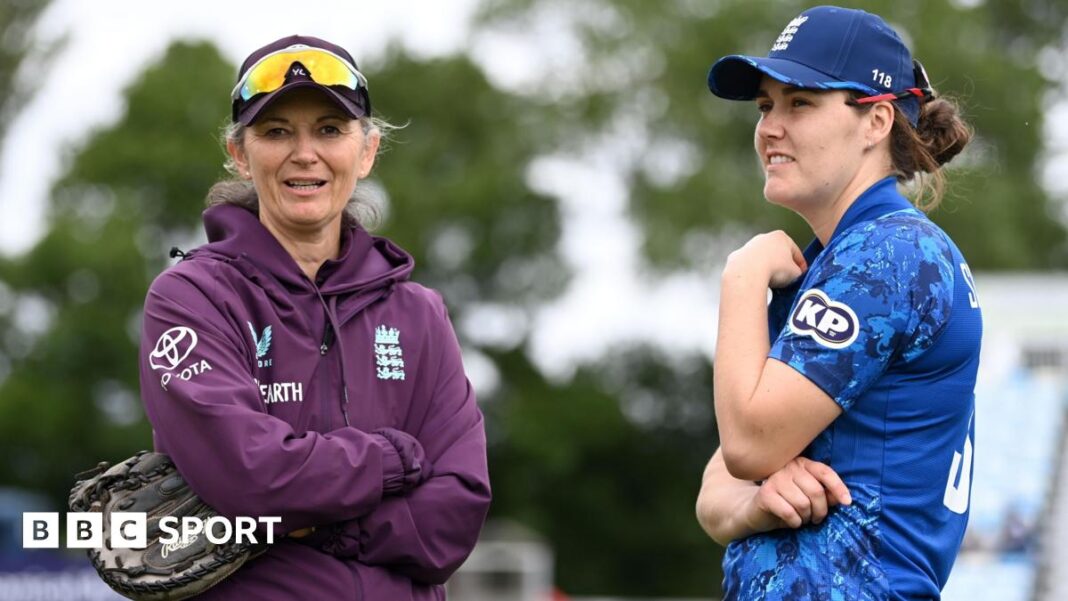Fielding has been one of England’s biggest areas for improvement, with six drops seeing them prematurely knocked out in T20 World Cup group stage and seven on day one of the Ashes Test alone.
They took 38 catches in this series but still dropped 13 chances, giving them a 75% catch efficiency. That is up from the 41% at the T20 World Cup in October and 63% in the Ashes, and on par with the 73% in home matches since 2020.
Their body language and demeanour was also criticised, with Lewis’ carefree approach lending itself to accusations of players not caring enough about the results.
Under their new leadership, England do seem re-energised with a buzz in the field and the new or returning faces like Smith and Issy Wong, who played two of the T20s, contributing to that change in energy. Edwards said training “had been great to be at”.
But considering the difference in circumstances – England were losing heavily in Australia and winning by barely breaking a sweat against West Indies – we are still no clearer on whether that will change under pressure.
“We’re under no illusions that we’re going to have tougher times ahead,” Edwards acknowledged.
“But equally I think what we’re seeing already is that appetite for wanting to keep getting better, because they’ve got to, they know they can’t stand still, there’s probably someone in county cricket scoring runs who’s winning games of cricket.
“It’s going to be difficult picking teams going forward, but that’s the place we wanted to be, we didn’t want to be picking for 15 or 16 players, we wanted to be picking from a pool of 25 players which I genuinely think we are now.”
Only Matthews has put England’s bowlers to the sword, but even on those occasions it never felt like they were in danger of losing.
The heat and humidity of India’s World Cup is where this will really be put to the test. Every game will matter and England will be well aware of the attention that will be on them to put things right after the Ashes.

